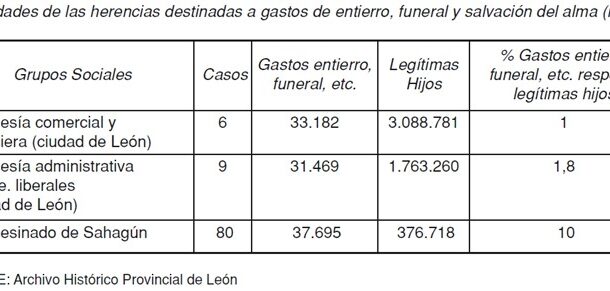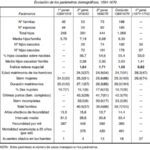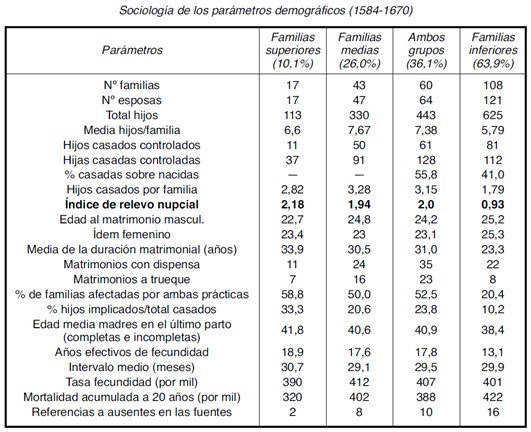
The resource deals with the demographic evolution of four generations, looking at their family composition, number of families, ages of access to marriage and the duration of marriage, among other items, between 1584 and 1670. The geographical area is centred on the south of western Galicia, the Bajo Miño, through the study of the rural parish of San Martín de Caldelas; a North Atlantic demographic model marked by the late age of access to marriage for women (24.5 years), the low level of second marriages (16.7%) and the duration of marriage (25 years) which resulted in a duration of fertility for couples of 13.9 years. The intergenerational synthesis reflected in the resource is reflected in the exponential growth of the parish which, after 100 years, had to be remodelled to increase its capacity to welcome the faithful. The growth, according to the author’s study, was mainly due to the nuptiality; a framework of legitimised fecundity, and the low mortality of those born.
Collection: Statistics
Project: 3. Rural world and urban world in the formation of the European identity., 4. Family, daily life and social inequality in Europe.
Chronology: XVI, XVII
Scope: Secondary Education, Baccalaureate, University
Link: https://www.adeh.org/revista/2009,%202/JM%20PCI%CC%80%C2%A7rez%20GarcA%CC%82%C2%B0a.pdf
Resource type: Statistics
Format: Table
Source: Pérez García, J. M. (2009). "Las claves de la euforia demográfica del Bajo Miño a través de San Martín de Caldelas (1580-1680)", en Revista de Demografía Histórica, XXVII, 2, p. 86.
Language: Spanish
Date: 2009
Owner: Pablo Ballesta Fernández (Modernalia)
Copyright: ©Revista de Demografía Histórica ©José Manuel Pérez García
Abstract: Table reflecting the evolution of the 4-generation household in the parish of San Martín de Caldelas to visualise the demographic North Atlantic model
Image
Tags






